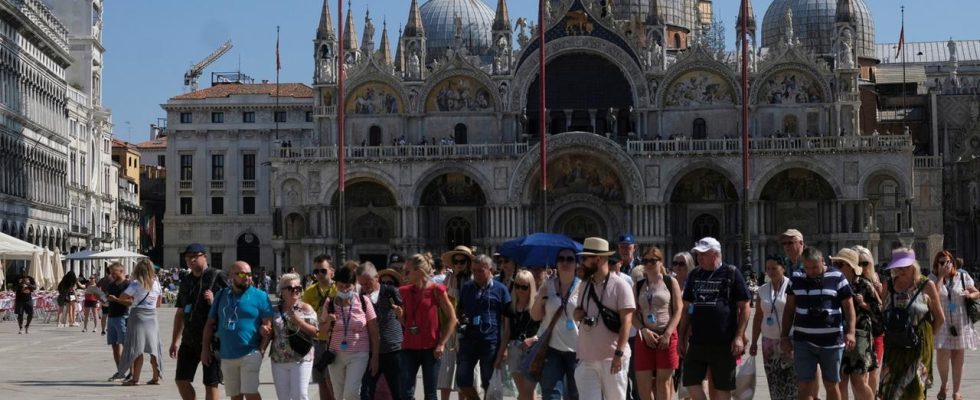world mirror
Venice lives from its many visitors and at the same time suffers from them. The city administration is looking for a recipe against too much tourism. But their plans are controversial – and implementation is not guaranteed.
Venice is magical – and pays a high price for it. This becomes particularly clear on sticky summer days when the masses of tourists crowd through the streets. Many Venetians groan under the “too much”, the so-called overtourism. However, there doesn’t seem to be a simple solution to this.
The Venetian city administration tried it: an entrance fee was intended to reduce the number of visitors. However, the decision was never implemented. The old town of Venice should remain a public place and not become an open-air museum. But hasn’t the “Serenissima” been that for a long time?
The tenants: More and more tourists
If you go to the quieter parts of the city, you will find quiet streets and squares. If a trolley case isn’t rattling past, one might think in the “Sestieri” that the enchanted Venice still exists.
But if you read the doorbell signs, it’s clear: Holiday apartments are behind most of the closed shutters. The rental market is booming, at least for tourists. For many locals looking to rent long-term, Venice is far too expensive.
Most young people move to the mainland after university at the latest. The cheaper apartments are just one reason. There are more and different jobs there and you can easily drive to the supermarket.
Venice’s old town is a place for pedestrians: low in CO2, without traffic jams – that’s for sure. But also with only a few playgrounds and not suitable for everyday use if you are traveling with a stroller.
The hotels are booked up quickly
The problem is not new and is getting worse every year. The old town still has almost 50,000 inhabitants, about the same number of hotel beds are available and are quickly taken in the summer months and at festival times. The offer should be reduced, demand activists like Giovanni Leone. But the city is hesitant.
“Overtourism” cannot be clearly defined: from how many guests it is “too much” for the locals is an emotional question. The assessment of the burden also depends on the extent to which local residents benefit from tourism.
Activist Leone says that the income from tourism has not been coming to the Venetians for some time, and that too little is being reinvested in the old town.
In 2016, the citizens of Venice had enough: they demonstrated against the overcrowding of the city.
The ideas of city administration
City officials say they understand the situation. But there doesn’t seem to be a simple solution. One idea is to lure young families back to the old town and to subsidize rents.
New companies that have nothing to do with tourism are also to settle in the old town. The streets have been under video surveillance more intensively for two years and the flow of tourists has been diverted in order to equalize them.
And then the city is also planning a large regulatory club: Anyone who wants to visit central squares in Venice as a day visitor will have to reserve a slot digitally in advance, similar to the national parks in the USA. It is not yet clear when that will happen. The city administration is currently planning a test phase.
Until a few years ago, the big cruise ships came very close to the center of the city. In the meantime, they have to set anchor at a greater distance.
Is the problem only shifted?
Will Venice finally become a huge open-air museum? Activist Leone fears that if reservations are required, people may no longer be congested on St. Mark’s Square, but in other places. And also occupy the last quiet corners that have existed so far.
In any case, the willingness to jointly bear the negative sides of mass tourism seems to be waning among the Venetian population.
You can see this and other reports in Weltspiegel – on Sunday at 6.30 p.m. in the first.

